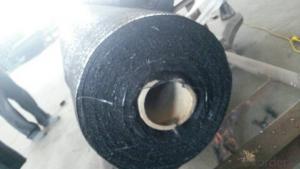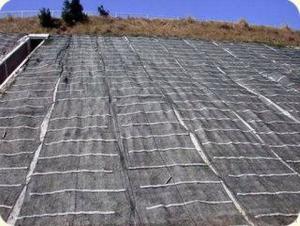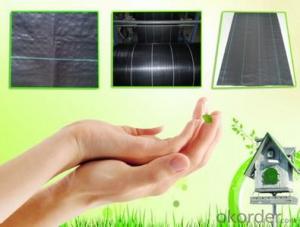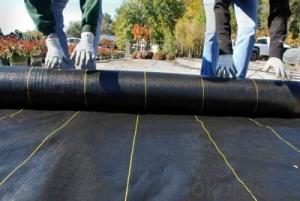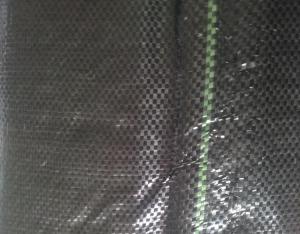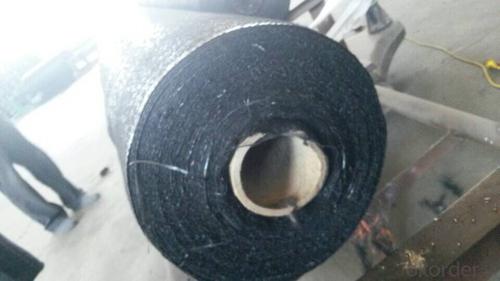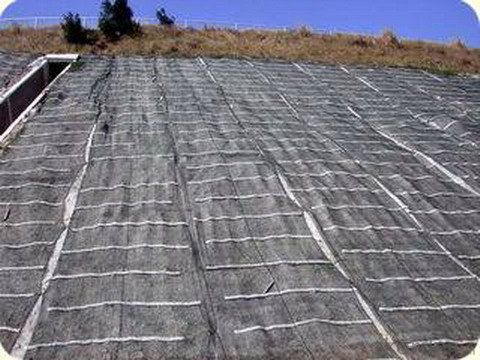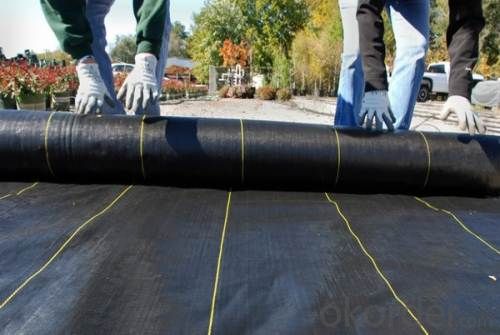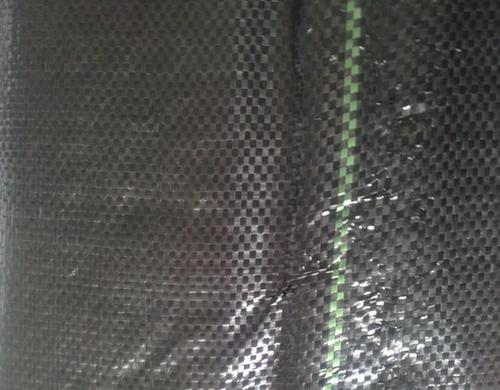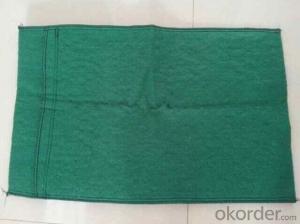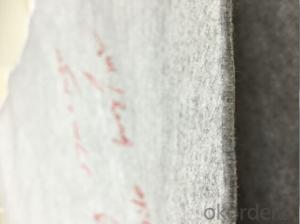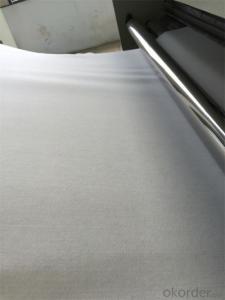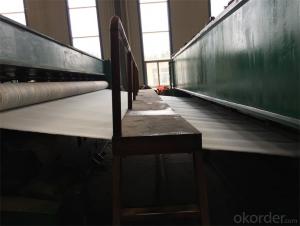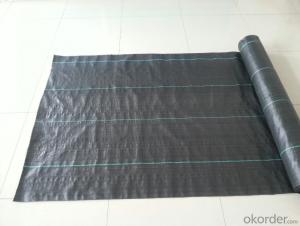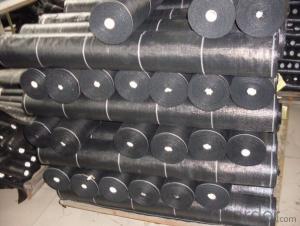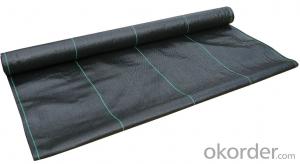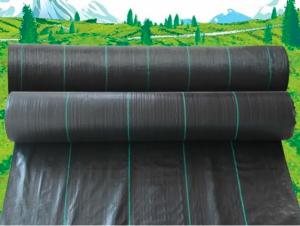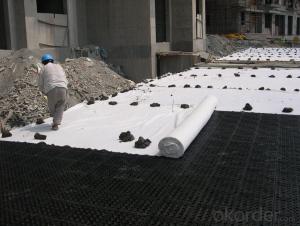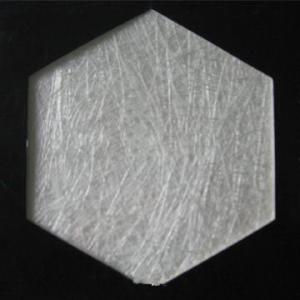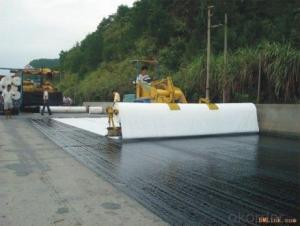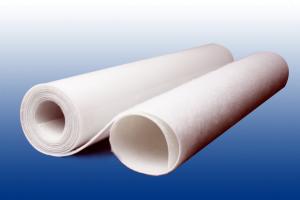Malla Geotextil Para Jardineras - PP Woven Weed Mat/Ground Cover/Weed Barrier Mat for Agriculture
- Loading Port:
- Qingdao
- Payment Terms:
- TT OR LC
- Min Order Qty:
- 10000 m²
- Supply Capability:
- 500000 m²/month
OKorder Service Pledge
OKorder Financial Service
You Might Also Like
1. Detailed Description:
products: | PP Woven ground cover/weed mat/weed barrier |
material: | PP or PE |
weaving condition: | weaved by circular jet loom |
mesh: | 7x7 8x8 9x9 10x10 11x11 12x12 14x14 |
weight/gram per square meter | 70--150g/sm |
width: | 90cm-600cm,available for wider fabric by heat sealing. Or as the clients' requirment |
size: | any sizes by the clients'requirment |
colors | mainly in black and green or other colors as per your request |
coating | laminated non woven geotextile or not |
making | rope reinforced hem ,heat sealed edges every eyelet interval 1m or three feet ,corner reinforced with triangle plastic sheets |
characterics | 1.Binding resistant,press resistant, 2.water-proof ,sun-resistant,anti-aging, tear proof. 3.antifreeze,corrosion-resistant, 4.could be produced with uv to five years |
application: | special for Agricultual use, stop the weed growth, and keep the water |
package | packed in roll or in bales or cartons |
delivery time | within 30 days after order |
payment terms | T/T or irrevocable L/C at sight. |
2 .Benefits for agriculture:
1. Excellent Weed Control
2. Exceptional UV resistance
3. Moisture, fertilizers, air reach plants to allow for healthy soil
4. Good water and air permeability
5. Exceptional toughness and strength
6. Durable, tear-resistant; Won't rot or mildew
7. Lightweight, easy to install, follows natural ground contours
8. Ideal for use in landscaped beds, under decks and walkways
Specification
ROPERTY | ASTM TEST METHOD | Minimum Average | Minimum Average |
Mass per unit Area | ASTM D-5261 | 3.0 oz/yd2 | 100 g/m2 |
Grab Tensile | ASTM D-4632 | 145 lbs | 660 N |
Grab Elongation | ASTM D-4632 | 15% | 15% |
Trapezoid Tear | ASTM D-4533 | 55 lbs | 245 N |
Water Flow Rate | ASTM D-4491 | 5 gal/min/ft2 | 203 L/min/m2 |
UV Resistance | ASTM D-4355 | 70% @ 500 hrs | 70% @ 500 hrs |
ROLL DIMENSIONS | |||
Roll Width | 0.9m (3’) | 1.8m (6') | 2.7m (9') |
Roll Length | 91.4m (300’) | ||
Roll Weight | 8kgs (17lbs) | 16kgs (34lbs) | 24kgs (52bs) |
Features
1. Weed suppressant and drainage control landscaping fabric
2. Easy to use, Environmentally friendly
3. Allows water, air and nutrients through, suppressing weeds without the use of chemicals
4. Reduces the level of watering required due to the slower rate of water evaporation
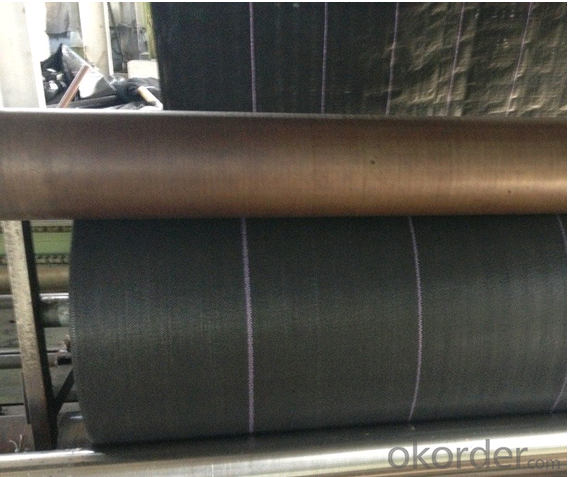
Application
1. Excellent Weed Control
2. Moisture, fertilizers, air reach plants to allow for healthy soil
3. Good water and air permeability
4. Exceptional toughness and strength
5. Durable, tear-resistant; won't rot or mildew
6. Lightweight, easy to install, follows natural ground contours
7. Ideal for use in landscaped beds, under decks and walkways.

Packaging & Delivery
| Packaging Details: | Packed In Roll Or In Bales Or Cartons Or According To Customers Requirement |
| Delivery Detail: | 20 Days After Order Confirmed |
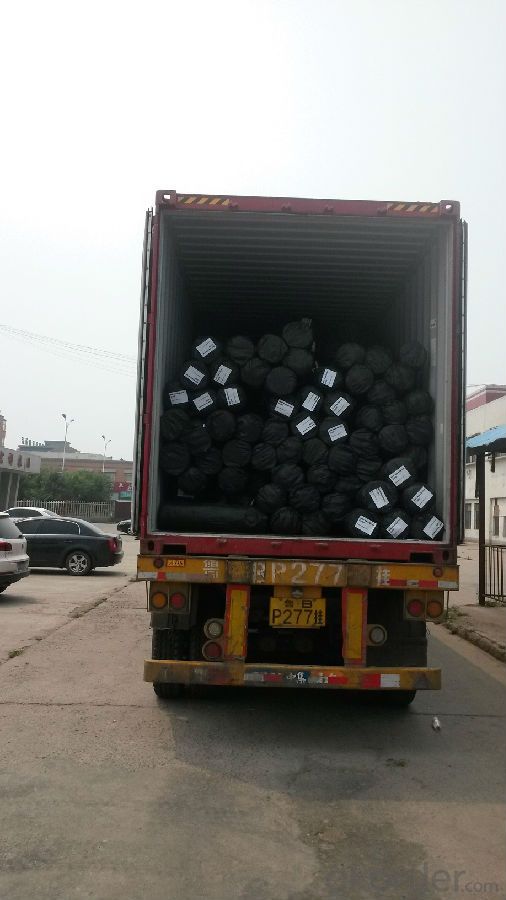
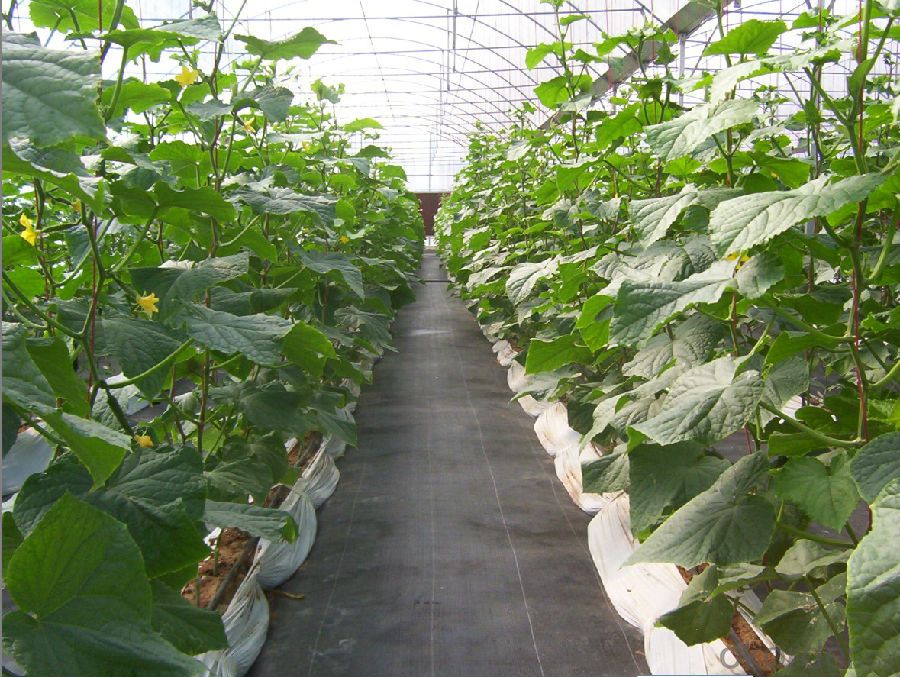
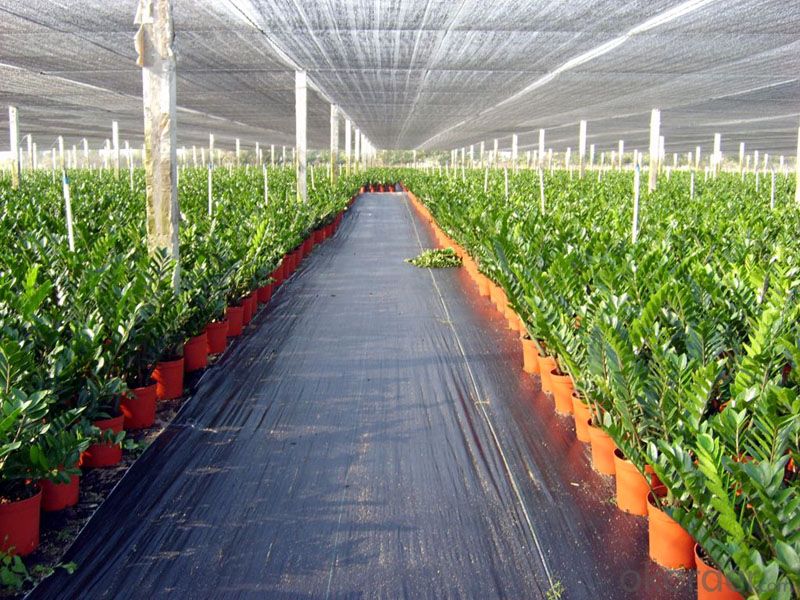
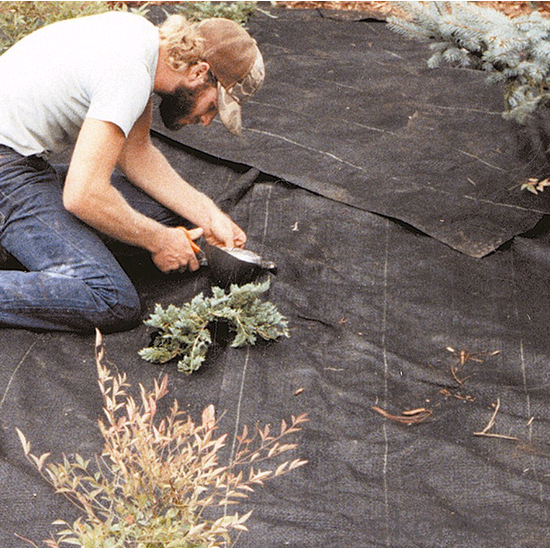
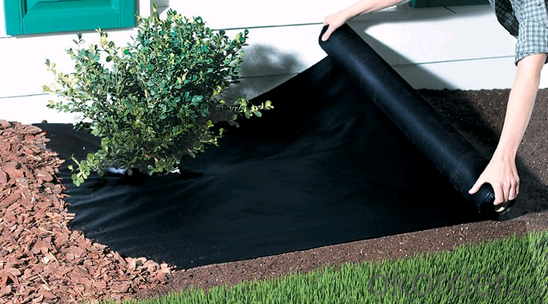
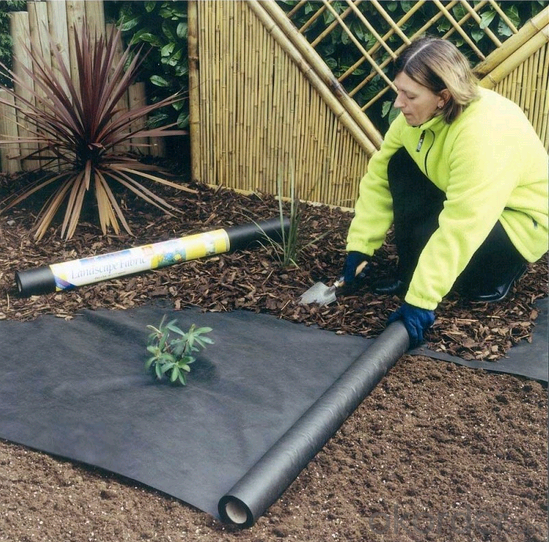
FAQ
1, Samples Policy
Samples are free, but the freight is on customers' charge
Samples will usually be sent out in one day.
2, Prices
As for the prices, we need you to provide us weight, color, width and usage so that
we can quote you best.
3, How to place an order?
Inquiry
Reply
Sample
Contract
Receiving deposit& production
Testing& Packing
Delivery
Receiving
- Q: What are the considerations for geotextile selection in road rehabilitation projects?
- When selecting geotextiles for road rehabilitation projects, there are several important considerations to keep in mind. Firstly, the geotextile should have sufficient strength and durability to withstand the expected loads and stresses in the road environment. It should also be resistant to degradation from environmental factors such as ultraviolet (UV) radiation and chemicals. Another consideration is the desired function of the geotextile. Different types of geotextiles offer various benefits, such as separation, filtration, drainage, or reinforcement. The specific requirements of the road project will determine which function is most important. Additionally, the properties of the soil and subgrade should be considered when selecting a geotextile. The geotextile should be compatible with the soil type and provide the necessary soil stabilization or separation capabilities. It is crucial to assess the project's soil conditions and consult with geotechnical engineers or experts to determine the appropriate geotextile specifications. Lastly, cost-effectiveness is an essential consideration. The selected geotextile should provide the desired performance while being economically viable for the project. Considering the long-term benefits and expected lifespan of the geotextile can help in making a cost-effective decision. Overall, the considerations for geotextile selection in road rehabilitation projects involve strength, durability, desired function, compatibility with soil conditions, and cost-effectiveness.
- Q: Fish tank white filter cotton toxic, is not geotextile, or non-woven Yeah
- Geotextile do fish tank filter, fish will die
- Q: How do geotextiles contribute to the durability of civil engineering structures?
- Geotextiles contribute to the durability of civil engineering structures by providing reinforcement, filtration, and separation. They act as a barrier against soil erosion, increase the load-bearing capacity of soil, and offer protection against water seepage. These functions help to prevent structural damage, enhance the lifespan of the infrastructure, and ensure its long-term stability.
- Q: What are the cost implications of using geotextiles in construction projects?
- The cost implications of using geotextiles in construction projects can vary depending on factors such as the type and quality of the geotextile, the size and complexity of the project, and the specific requirements of the site. Generally, geotextiles can add an additional cost to the project due to the cost of the material itself, installation, and any necessary testing or inspections. However, these costs can often be offset by the benefits provided by geotextiles, such as increased durability, improved soil stability, reduced long-term maintenance, and potential savings in material and labor costs. Ultimately, a thorough cost-benefit analysis should be conducted to determine the overall financial implications of using geotextiles in a construction project.
- Q: Can geotextiles be used in the construction of green roofs?
- Yes, geotextiles can be used in the construction of green roofs. Geotextiles are often used as a protective layer to separate the growing medium from the underlying roof structure, providing drainage and preventing soil erosion. They also help in retaining moisture and promoting healthy plant growth on green roofs.
- Q: Are geotextiles commonly used in canal bank protection?
- Yes, geotextiles are commonly used in canal bank protection. They are often used as a reinforcement material to prevent soil erosion and provide stability to canal banks. Geotextiles help to distribute loads and reduce the risk of bank failure, making them an effective solution for canal bank protection.
- Q: Can geotextiles be used for erosion control in golf courses?
- Yes, geotextiles can be used for erosion control in golf courses. Geotextiles are permeable fabrics that can be installed to stabilize soil and prevent erosion by retaining sediment and preventing it from washing away. They can be used in various applications such as stabilizing slopes, reinforcing embankments, and controlling sediment runoff, which makes them an effective solution for erosion control in golf courses.
- Q: How do geotextiles affect noise pollution?
- Geotextiles can help reduce noise pollution by acting as a sound barrier. They absorb and dampen sound waves, preventing them from traveling through the ground and creating noise pollution.
- Q: How do geotextiles help with erosion control on shorelines?
- Geotextiles help with erosion control on shorelines by acting as a barrier that prevents soil erosion while still allowing water to pass through. They stabilize the soil by trapping sediment and preventing it from being washed away by waves or currents. Additionally, geotextiles promote the growth of vegetation, which further helps to anchor the soil and reduce erosion.
- Q: What are the maintenance requirements for geotextile-reinforced retaining walls?
- The maintenance requirements for geotextile-reinforced retaining walls typically include regular inspections for signs of erosion, damage, or structural issues. Additionally, any vegetation growing near the wall should be monitored and removed if it poses a threat to the integrity of the structure. It is also important to ensure proper drainage and prevent water buildup behind the wall. Regular cleaning and removal of debris is necessary to avoid blockages and maintain the functionality of the drainage system. Overall, following manufacturer guidelines and conducting routine maintenance activities will help ensure the longevity and effectiveness of geotextile-reinforced retaining walls.
Send your message to us
Malla Geotextil Para Jardineras - PP Woven Weed Mat/Ground Cover/Weed Barrier Mat for Agriculture
- Loading Port:
- Qingdao
- Payment Terms:
- TT OR LC
- Min Order Qty:
- 10000 m²
- Supply Capability:
- 500000 m²/month
OKorder Service Pledge
OKorder Financial Service
Similar products
Hot products
Hot Searches
Related keywords
